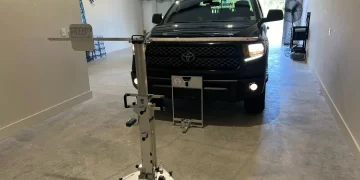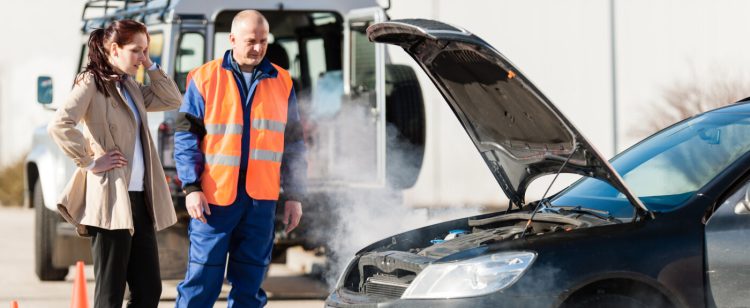Introduction
Owning a car can be both exciting and challenging. While cars provide the freedom to travel and the convenience of getting from one place to another, they also come with their own set of problems that can arise unexpectedly. Car troubles can range from minor inconveniences to serious issues that require professional attention. As a car owner, understanding the most common troubleshooting issues and how to diagnose them is crucial for maintaining your vehicle’s longevity and performance.
In this article, we will explore the most common car problems, their causes, and the steps you can take to troubleshoot and potentially fix them before they escalate into major repairs. From engine overheating and poor fuel efficiency to brake issues and electrical system malfunctions, we’ll guide you through the essential diagnostic steps. Additionally, we’ll cover how to address simple car maintenance issues to save time, money, and stress.
Troubleshooting: Diagnosing Common Car Problems
1. Engine Overheating
Cause: Overheating is one of the most common car issues and can be caused by various factors, including a malfunctioning radiator, low coolant levels, or a broken thermostat. When the engine temperature rises above normal levels, it can lead to engine damage if not addressed promptly.
Signs: The dashboard temperature gauge may rise into the red zone, or you may notice steam coming from under the hood. You may also hear a loud, boiling noise from the engine.
Diagnosis:
- Check the coolant level in the radiator and the overflow tank. Low coolant levels can lead to overheating. Ensure the coolant is at the recommended level.
- Inspect the radiator for leaks. Leaks can cause coolant to escape, leading to insufficient cooling.
- Test the thermostat to see if it is stuck in the closed position, preventing coolant flow.
Fix:
- If the coolant level is low, top it up with the recommended coolant type.
- If you notice leaks in the radiator or hoses, these parts may need to be replaced.
- If the thermostat is malfunctioning, it will need to be replaced by a mechanic.
2. Poor Fuel Efficiency
Cause: A drop in fuel efficiency can occur due to several reasons, including clogged air filters, under-inflated tires, dirty fuel injectors, or a failing oxygen sensor. Poor fuel efficiency means that your car is burning more fuel than it should, leading to higher costs at the pump.
Signs: You may notice that you have to fill up your gas tank more frequently than usual, or the “check engine” light may appear on the dashboard.
Diagnosis:
- Check the air filter. A clogged air filter can reduce airflow to the engine, causing poor fuel efficiency.
- Inspect the tire pressure. Under-inflated tires create more rolling resistance, which reduces fuel efficiency.
- Examine the fuel injectors for dirt and clogging. Dirty injectors can cause incomplete combustion, lowering fuel economy.
Fix:
- Replace the air filter if it is dirty or clogged.
- Inflate the tires to the recommended pressure to ensure optimal fuel economy.
- Use a fuel injector cleaner to clean the injectors. If they are severely clogged, consider having them professionally cleaned or replaced.
- If the issue persists, have the oxygen sensor inspected and replaced by a mechanic.
3. Brake Issues
Cause: Brake problems are one of the most serious car issues that can affect both safety and driving comfort. Common brake issues include worn brake pads, low brake fluid, and air in the brake lines. A lack of braking efficiency can lead to longer stopping distances and unsafe driving conditions.
Signs: You may hear squeaking, grinding, or other abnormal noises when applying the brakes. The brake pedal may feel spongy or require more pressure to engage, or the car may pull to one side when braking.
Diagnosis:
- Inspect the brake pads. If they are worn down to less than 1/4 inch, they need to be replaced.
- Check the brake fluid level. Low brake fluid can reduce braking power.
- If you hear grinding noises, it may indicate that the brake pads are worn down to the metal and are damaging the brake rotors.
Fix:
- Replace the brake pads if they are worn out.
- Top up the brake fluid if it’s low. If the fluid is discolored, it may need to be flushed and replaced.
- If the brake rotors are damaged, they may need to be resurfaced or replaced.
4. Dead Battery
Cause: A dead or weak battery can prevent your car from starting and is typically caused by an aging battery, a malfunctioning alternator, or leaving lights on overnight. Extreme weather conditions, such as cold winters or hot summers, can also shorten the life of a car battery.
Signs: The car may fail to start or crank slowly. You may hear a clicking sound when you turn the key or press the start button.
Diagnosis:
- Test the battery voltage with a multimeter. A healthy battery should have a voltage between 12.6 and 12.8 volts when the engine is off.
- Check the battery terminals for corrosion or loose connections.
- Test the alternator by checking if the car’s voltage increases when the engine is running.
Fix:
- If the battery is old (usually over 3-5 years), replace it with a new one.
- Clean any corrosion off the battery terminals and ensure the connections are tight.
- If the alternator is faulty, it will need to be replaced.
5. Electrical System Problems
Cause: Electrical issues can arise from faulty wiring, blown fuses, or malfunctioning sensors. These problems can affect everything from the lights to the dashboard display and even the car’s ability to start.
Signs: You may experience problems such as dimming lights, malfunctioning dashboard indicators, or the car’s electrical components not working at all.
Diagnosis:
- Check the fuses to see if any are blown. A blown fuse can cause electrical systems to stop working.
- Inspect the wiring for visible damage or loose connections.
- Test the battery voltage and alternator to ensure they are working properly.
Fix:
- Replace any blown fuses with the correct type and rating.
- Repair or replace any damaged wires or connectors.
- If the alternator or battery is the issue, replace them as necessary.

Fixing Simple Problems: How to Address Basic Car Maintenance Issues
While some car problems require professional help, many common issues can be addressed through basic maintenance. By staying proactive with your car’s upkeep, you can prevent many problems from arising in the first place.
1. Changing the Oil
Regular oil changes are essential to keeping your car’s engine running smoothly. Over time, oil can break down and become contaminated, which reduces its ability to lubricate the engine and can lead to engine wear.
How to Change Oil:
- Check the owner’s manual for the recommended oil type and change interval.
- Drain the old oil and replace the oil filter.
- Refill with fresh oil to the correct level.
2. Replacing the Air Filter
A clogged air filter can reduce engine performance and fuel efficiency. Replacing the air filter is a simple task that can be done at home.
How to Replace the Air Filter:
- Locate the air filter housing, usually near the engine.
- Open the housing, remove the old air filter, and install a new one.
3. Checking Tire Pressure
Proper tire pressure is crucial for safety, fuel efficiency, and tire longevity. Under-inflated tires can lead to poor handling and increased tire wear, while over-inflated tires can cause a rough ride and increase the risk of tire blowouts.
How to Check Tire Pressure:
- Use a tire pressure gauge to check the pressure in each tire.
- Compare the reading with the recommended pressure listed in the owner’s manual or on the tire placard.
- Inflate or deflate the tires as needed.
4. Replacing Wiper Blades
Worn-out wiper blades can reduce visibility in adverse weather conditions, creating a safety hazard.
How to Replace Wiper Blades:
- Lift the wiper arm and remove the old blade by releasing the clip.
- Install the new wiper blade and ensure it is securely attached.
Conclusion
Car troubleshooting can seem intimidating, but by understanding the common issues that affect vehicles and how to diagnose and fix them, car owners can save time, money, and avoid unnecessary trips to the mechanic. From engine overheating and brake issues to electrical system malfunctions, many common car problems can be addressed with basic troubleshooting skills.
It’s important to stay proactive with your car’s maintenance to catch small issues before they escalate into larger problems. Regular checks, such as changing the oil, replacing the air filter, and checking tire pressure, can go a long way in preventing breakdowns and ensuring your car runs smoothly for years to come.
While more complex issues may require professional help, understanding the basics of car troubleshooting and performing routine maintenance can help you become a more knowledgeable and confident car owner.


































Discussion about this post